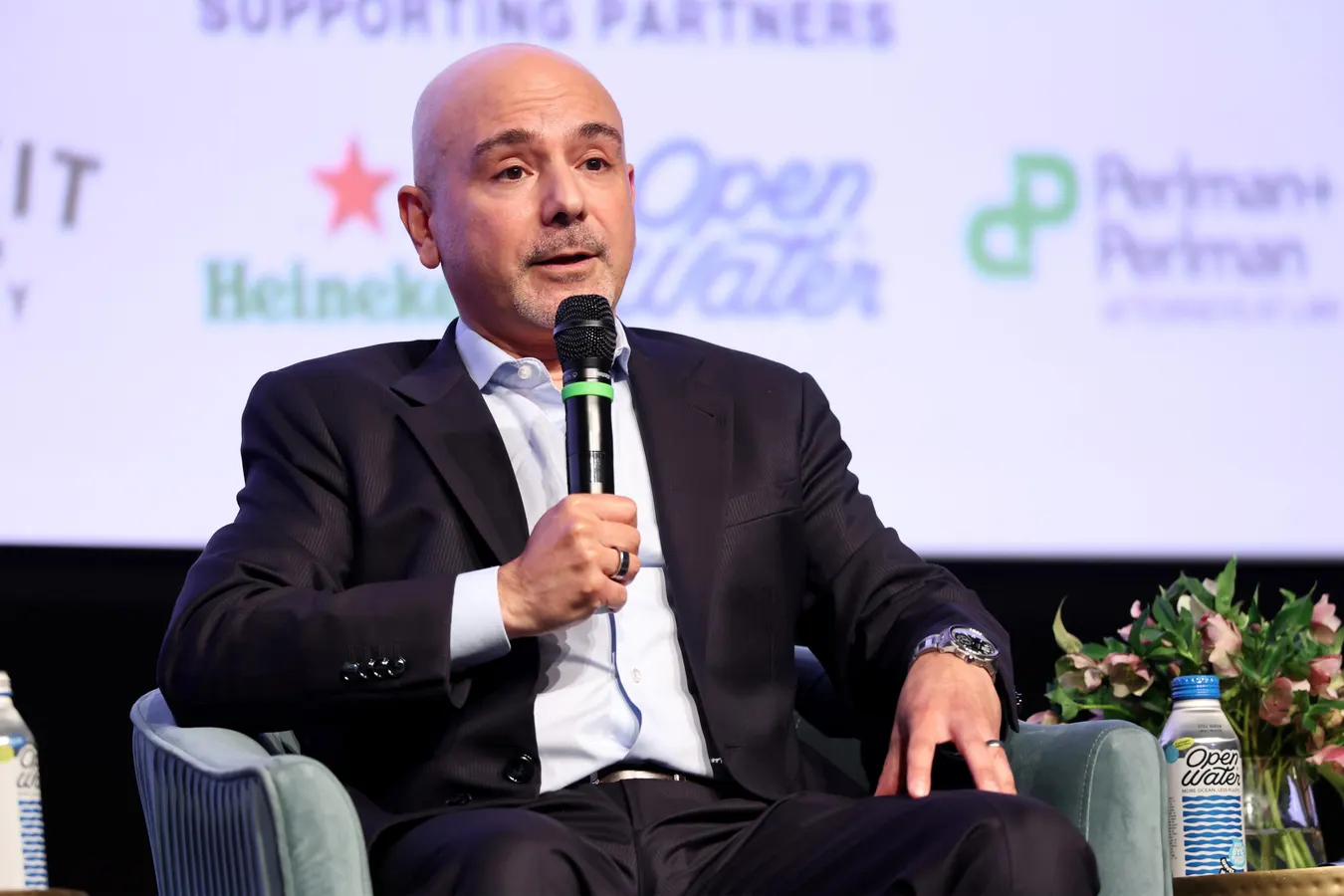By Contributor,Heather Wishart-Smith,The Hollywood Reporter
Copyright forbes

LOS ANGELES, CALIFORNIA – JULY 24: Dr. Eric Esrailian speaks onstage during the 2025 Social Impact Summit by The Hollywood Reporter and Social Impact Fund on July 24, 2025 at the DGA in Los Angeles, CA. (Photo by Monica Schipper/The Hollywood Reporter via Getty Images)
The Hollywood Reporter via Getty Images
Many leaders are advised to “stay in their lane.” Dr. Eric Esrailian has spent his career doing the opposite. A physician, Emmy-nominated film producer, philanthropist and social innovator, he has built coalitions across medicine, entertainment, government and philanthropy. His latest initiative, Together California, co-founded with actor Christian Bale, aims to reform foster care by keeping siblings together. It is a powerful example of how leaders can focus on leading systemic change.
Medicine as a Foundation for Systemic Change
Esrailian’s career may look eclectic to outside observers. To him, there’s always been consistent logic. “In my life, there’s a through line that I see all the time with any project I’m working on,” he explained. “All of these realms are some way to heal people. Medicine is naturally a way to help, but I began to see communities – and even the world – as the patient.”
That perspective shaped his transition from physician to administrator at UCLA, where he now influences major initiatives in healthcare and innovation. He views his skills from medicine – diagnosing complex problems under pressure, leading teams in critical situations, and rapidly synthesizing information – as directly translatable to leading systemic change across industries.
Storytelling as a Catalyst for Systemic Change
HOLLYWOOD, CA – APRIL 12: (L-R) Producer Eric Esrailian, TV personalities Kourtney Kardashian, Kim Kardashian West, and singer Cher attend the premiere of Open Road Films’ “The Promise” at TCL Chinese Theatre on April 12, 2017 in Hollywood, California. (Photo by Frederick M. Brown/Getty Images)
Getty Images
Esrailian believes systems don’t change with data alone. They change when leaders use stories to convey their message. As the producer of The Promise and Intent to Destroy, films that spotlighted the Armenian genocide, he used storytelling to shift public awareness and influence U.S. policy. “You don’t want to just give people spinach and say it’s good for you and expect them to eat it,” he explained. “The important way to tell a story is to be inspirational and captivating, grabbing someone in their heart and mind.”
MORE FOR YOU
For leaders, his lesson is clear: storytelling is a leadership strategy for systemic change. Whether inspiring policymakers, donors or students, a compelling narrative can turn abstract problems into personal and urgent calls to action.
Together California: A Case Study in Leading Systemic Change
PALMDALE, CALIFORNIA – FEBRUARY 07: Sibi Blazic and Christian Bale attend Together California’s Foster Care Center Ground Breaking event on February 07, 2024 in Palmdale, California. (Photo by Robin L Marshall/Getty Images)
Getty Images
Nowhere is Esrailian’s coalition-building clearer than in Together California. With the support of the Austrian-American Council West, local government, and donors, he and Bale are constructing a foster village in Palmdale, California, to address a staggering statistic: 75% of foster children in Los Angeles are separated from their brothers and sisters.
The model is adapted from a successful program in Illinois and employs professional foster parents whose sole responsibility is to raise children in a stable home. That innovation required navigating government inertia, aligning community leaders and raising more than $24 million of a $28 million goal.
“You need caring people first of all,” Esrailian advised when it comes to creating partnerships. “Where there’s a will, there’s a way. It took finding the right leader, a willing partner and then putting a plan together – land, money, government support and experts. That’s how it happened.”
His takeaway: sustainable change requires more than vision. Leaders must connect unlikely allies, align incentives and persist through obstacles until systems start to move.
Choosing Systemic Reform Over Quick Wins
Hollywood often rewards quick visibility. Esrailian intentionally focuses on moonshots. “There’s a Chinese proverb that says the best time to plant a tree was 20 years ago; the second-best time is today,” he reflected. “I like to think about moonshots – things that maybe in my lifetime nobody will fully understand. History will judge what we’re working on.” His focus on moonshots is underscored by his service on the board of the XPRIZE Foundation.
That philosophy underpins initiatives like the California Institute for Immunology and Immunotherapy, a $500 million public-private partnership he co-founded to cure immune-related diseases. By adapting an abandoned shopping center into a research hub, he and his partners are going beyond developing treatments to include the community in which they work.
Developing Teams for Systemic Change
For Esrailian, leadership is as much about people as it is about ideas. “First of all, you have to be able to find people who are sincere,” he explained. Years of working with some of the most high-profile figures in entertainment taught him to distinguish between those drawn to the spotlight and those committed to doing the work when no cameras are around. He seeks partners who align with the mission and are motivated to utilize their visibility for altruistic purposes, rather than personal gain.
Esrailian also applies this lens to organizational leadership. He values what he calls “dreamers and doers” – people who can generate bold ideas but also execute them. “Vision without execution, or execution without vision, won’t get you there,” he noted. Developing teams means combining sincerity, capability and alignment so that initiatives can thrive without micromanagement.
Lessons on Leading Systemic Change
Across systems – from healthcare to entertainment to foster care – Esrailian applies the same leadership formula: diagnose systemic problems, tell a story that inspires action, convene sincere and capable partners and persist toward long-term reform.
For leaders in any field, his message is simple: don’t let your industry define your limits. Leading systemic change requires true leadership and the uniting of unlikely allies to tackle entrenched problems, creating a legacy that outlives personal recognition.
Did you enjoy this story on leading systemic change? Don’t miss my next one: use the blue “follow” button at the top of the article near my byline to follow my work, and check out my other columns here.
Editorial StandardsReprints & Permissions



